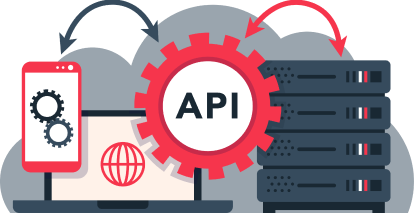Table of Contents
In our experience at Matchnode, digital health ads are complex. Navigating the intricate maze of innovative advertising strategies and rigorous regulations such as HIPPA and PII protection, they find themselves at a critical juncture. Navigating this swiftly changing terrain, where traditional cookies are becoming obsolete and innovative technologies such as CAPI emerge, optimizing digital health ads presents a unique challenge.
So, how do you stay ahead? You’ll learn about navigating these complexities without losing your campaign’s edge. We’re diving deep into digital marketing healthcare ad campaigns in a cookieless world, boosting conversion rates through smart insurance selection, mastering ad platform setups, and more.
In particular, having experienced technical and creative teams is required to assure that you can effectively get your message to your target audience in a very competitive digital marketing landscape. Digital health solutions are enjoying explosive growth in the United States, thanks to a combination of personalized medicine, preventative medicine, and telehealth that allows a patient care experience that is about “healthcare” (rather than waiting until problems pop up–better known as “disease care”).
This read is packed with insights on optimizing digital health ads and assuring they are not just compliant but competitive too. Let’s get to it.

Navigating Legal Complexities in Digital Health Advertising
Understanding HIPPA and PII Regulations
In the realm of digital health, where tech meets personal care, navigating through a web of legal stipulations becomes intricate and complex. The first hurdle? Building an integrated digital patient experience that is respectful and compliant with HIPPA and PHI regulations. Navigating these statutes is more than mere compliance gymnastics; it’s a cornerstone in safeguarding individual health records amidst our advancing digital landscape.

HIPPA (Health Insurance Portability and Accountability Act) sets the standard for sensitive patient data protection in the US healthcare industry. Companies that deal with protected health information must have physical, network, and process security measures in place.
On the other hand, PII (Personally Identifiable Information) covers any data that could potentially identify a specific individual.
Digital ads (especially ads on social media and search engines) often collect user data to improve targeting strategies but doing so without breaching these regulations requires finesse. A misstep here can not only lead to hefty fines but also erode trust among users—something no healthcare company can afford to lose.
Strategies for Compliance without Compromising Campaign Effectiveness

Finding creative ways to remain compliant while still running effective social media marketing (and Google) ad campaigns is less about dodging restrictions and more about understanding them deeply enough to work within their bounds creatively.

One approach is anonymizing data before using it for advertising purposes—a method that respects privacy while still allowing marketers some room to maneuver. Another strategy involves leveraging broad targeting parameters instead of overly specific ones which might risk violating PII rules yet still reach a relevant audience efficiently.

A key part of navigating this landscape successfully includes staying updated on changes both in legislation around privacy practices as seen here. It’s also crucial to make sure compliance departments get involved early in the campaign planning process, rather than being added on as an afterthought.
Optimizing Ad Campaigns in a Cookieless World
The digital ad world is changing, going back years to iOS 14.5 and subsequent versions. With browsers kicking cookies to the curb, it’s time for us marketers to get creative and adapt. But don’t sweat it; let’s talk about how you can stay ahead of the game.
The Importance of Conversions API (CAPI)
First up, we’ve got CAPI stepping into the spotlight. Think of Conversions API as your new best friend in tracking ad performance without relying on traditional cookies. It’s like going from sending letters by pigeon post to instant messaging – that level of upgrade in communication between your website and Facebook ads platform.

This shift isn’t just nice to have; it’s essential for keeping your ads relevant and effective in a cookie-less era. Implementing CAPI ensures you’re not flying blind when it comes to understanding how users interact with your ads.
Preparing for Google’s Cookieless Solutions
Next on our agenda: getting ready for Google’s move away from cookies. Like preparing for winter in “Game of Thrones,” this change requires preparation and strategy. Google’s crafting solutions akin to CAPI, heralding a less turbulent shift into the evolving ad realm.
To thrive amidst these changes, starting early with technical setups on platforms like Facebook through implementing CAPI is crucial. Staying informed about upcoming solutions by Google will also help you pivot quickly once they roll out their updates fully geared towards privacy-friendly tracking mechanisms.
In essence, embracing these tools now will ensure that healthcare organizations are not left playing catch-up later down the line because remember – when one door closes (or in this case, one cookie crumbles), another opens…and often leads to more innovative ways of connecting with audiences online.
Enhancing Conversion Rates Through Insurance Selection
Imagine this: you’re browsing online for a new digital health service. You find one that looks perfect, but then you hit a snag – it doesn’t accept your insurance. Frustrating, right? Well, digital health companies have found that letting users pick their in-state insurance company directly on ads and landing pages can massively boost conversion rates.
This approach taps into the simple logic of personalization; when people see their specific needs being addressed, they are far more likely to engage. It’s not just about convenience; it’s about creating a connection from the get-go. The stats back this up too. Companies employing this strategy have seen significant upticks in engagement and conversions simply because they’ve made the process feel more tailored to individual users.
Preparing for Google’s Cookieless Solutions
Next on our agenda: getting ready for Google’s move away from cookies. Like preparing for winter in “Game of Thrones,” this change requires preparation and strategy. Google’s crafting solutions akin to CAPI, heralding a less turbulent shift into the evolving ad realm.
To thrive amidst these changes, starting early with technical setups on platforms like Facebook through implementing CAPI is crucial. Staying informed about upcoming solutions by Google will also help you pivot quickly once they roll out their updates fully geared towards privacy-friendly tracking mechanisms.
In essence, embracing these tools now will ensure that healthcare organizations are not left playing catch-up later down the line because remember – when one door closes (or in this case, one cookie crumbles), another opens…and often leads to more innovative ways of connecting with audiences online.
KEY STATS
Conversion rates significantly increase when digital ads and landing pages allow users to select their specific in-state insurance company
The numbers don’t lie. When potential customers can quickly see that their particular insurance is accepted, the likelihood of them completing an action skyrockets. Why? Because you’ve removed one major hurdle in their decision-making process before they even really start weighing options.
But there’s another layer here worth mentioning – trust. By showcasing upfront compatibility with various insurances, especially those within a user’s state (which has its own set of rules and coverages), businesses signal that they understand customer needs at both broad and nuanced levels.
To put it plainly: adapting your ad campaigns to feature selectable insurance options isn’t just smart; it’s necessary for standing out in today’s crowded digital health market. Forbes Health delves into the strategies’ influence on consumer decisions, providing more profound explanations for why tailoring options always secures victory.
The Impact of State-Based Insurance Variability
Imagine navigating a maze where the walls constantly shift. That’s what digital health companies face with state-based insurance variability in the US. Navigating through the labyrinth of each state’s unique regulations presents a formidable challenge for healthcare providers striving to secure compensation.
This patchwork system means that if you’re offering telehealth services in Oregon but your patient is in Florida, things can get complicated unless both parties are covered under an insurance plan recognized by both states. Navigating this feels akin to engaging in a match where the targets constantly shift positions.
Understanding HIPPA and PII Regulations
Digital advertising in healthcare isn’t just about catching eyes; it’s also about protecting sensitive information under laws like HIPAA (Health Insurance Portability and Accountability Act) and ensuring Personally Identifiable Information (PII) security. Compliance is non-negotiable.

To stay on the right side of these regulations while still reaching out effectively to potential clients, marketers need a deep understanding of what data they can use and how. For example, by stripping patient information of identifying details prior to examination, we safeguard their confidentiality yet still glean crucial insights for crafting focused initiatives.
Strategies for Compliance without Compromising Campaign Effectiveness

Exploring innovative methods to adhere to tough regulations doesn’t necessitate a trade-off in the potency of marketing endeavors. One strategy involves leveraging technology solutions that allow advertisers to target broad demographics without crossing into personal territory—think age groups or general geographic locations rather than specific medical histories.

Apart from technology tools, education plays a crucial role too. Training marketing teams on what constitutes PHI (Protected Health Information) ensures everyone knows the boundaries not to cross during campaign creation according to HHS guidelines. This way, you can craft compelling ads that respect privacy concerns yet resonate deeply with your audience because they feel safe engaging with them.
Mastering Ad Platform Technical Setups
If you’ve ever felt like your digital ads were getting lost in the shuffle, it’s probably because they were. Without a proper technical setup, your campaigns are like ships trying to sail without a compass. The stark reality is that failing to optimize can lead directly to losing out in competitive ad auctions.
KEY STATS
Failure to optimize technical setup can result in losing to competitors in competitive ad auctions
The numbers don’t lie; optimizing your ad platform’s technical setup isn’t just important—it’s crucial for survival. Imagine being on the starting line of a race with everyone else having top-notch running shoes while you’re stuck with flip-flops. That’s essentially what happens when you enter highly competitive ad auctions without an optimized setup.
Venturing further into this landscape, the task grows increasingly complex with the fading relevance of cookies and stricter privacy laws clenching around traditional tracking techniques like a vice. For instance, leveraging Conversions API (CAPI) on Facebook has become indispensable for navigating these changes effectively.
Navigating Legal Complexities in Digital Health Advertising
Digital health companies face their own unique set of challenges when it comes to advertising online—HIPAA compliance and securing Personally Identifiable Information (PII) take center stage here. Navigating this terrain isn’t merely about adherence to guidelines; it’s an intricate dance of tactfully threading through regulations without dampening the vigor of our campaigns.
To tackle this head-on, savvy marketers use strategies that ensure legal boxes are checked while still pushing the envelope creatively within those constraints. This balance requires not only knowledge but experience—a firsthand understanding of both marketing tactics and regulatory boundaries.
The Importance of Conversions API (CAPI)
In our increasingly cookieless world, CAPI stands out as a beacon for advertisers looking for reliable ways to track conversions accurately while respecting user privacy. It bridges the gap between needing detailed conversion data and adhering to new norms by transmitting information from server-to-server, bypassing traditional browser-based tracking mechanisms entirely. This method doesn’t just comply with privacy standards; it elevates campaign performance by providing cleaner, more actionable data.
Quality Score Optimization Post-CAPI Implementation

After the Conversions API (CAPI) rollout, digital health ads entered a new era. But here’s the kicker: it brought along its own set of challenges, especially around event match quality scores and legal hoops like Protected Health Information (PHI) and HIPPA.
Understanding HIPPA and PII Regulations
HIPPA and PII regulations are like the strict parents of digital advertising. They’re there to make sure everything is safe but can sometimes feel like they’re limiting your freedom. Navigating through these guidelines shapes our approach to data utilization in marketing initiatives, placing adherence at the forefront of our priorities. It’s not just about avoiding fines; it’s about earning trust by protecting user information.
The key? Balancing effective marketing with these stringent requirements isn’t easy, but it’s doable with some smart strategies up your sleeve.
Strategies for Compliance without Compromising Campaign Effectiveness

To navigate this tricky landscape, you first need to get familiar with de-duplication processes post-CAPI implementation. Facebook offers guidance on this topic. This step helps ensure that your ad performance metrics are accurate and not inflated by duplicate events—crucial for maintaining high-quality scores within legal constraints.

Beyond that, integrating state-based insurance selection into your ads can significantly boost conversion rates. Why does this work so well? Because when users see their specific in-state insurance option available, they feel seen—and more importantly—cared for. This personal touch makes them far more likely to engage.

Last but not least, always keep an eye on technical setup optimizations. Google has resources designed to help you stay competitive in ad auctions by leveraging tools such as CAPI effectively. Remember: falling behind technically means losing out on potential conversions.
Targeting and Creative Strategies for Digital Health Ads
Imagine throwing a dart in the dark. That’s what digital health advertising can feel like without smart targeting and creative strategies. The key? Knowing how to light up the board so your ads reach your target audience every time.
The secret sauce is broad targeting within healthcare constraints, coupled with top-notch creative assets. Ad platforms are at their best when they cast a wide net but stay snugly within the lines of your healthcare solution’s unique needs. This approach ensures that algorithms get smarter over time, directing your ads to folks who genuinely need them.

Understanding HIPPA and PII Regulations
Navigating HIPPA and PII regulations feels like walking through a minefield blindfolded—but it doesn’t have to be. Navigating the complexities of these statutes is pivotal, as it fortifies confidentiality and fosters confidence among your clientele. Grasping the essence of these regulations not only sidesteps legal woes but also molds marketing efforts that strike a chord by honoring individual privacy.
To stay on track without sacrificing effectiveness, educate yourself on HIPAA guidelines, ensuring all campaign materials comply while still hitting marketing goals.
Strategies for Compliance without Compromising Campaign Effectiveness

Achieving compliance and improving digital healthcare experiences while keeping ad campaigns effective is no small feat but entirely possible with some ingenuity. Start by integrating anonymized patient testimonials or leveraging aggregate data insights—both powerful ways to connect emotionally without crossing privacy boundaries.

Incorporating dynamic content that adapts based on viewer demographics (without using personally identifiable information) can significantly boost engagement rates too. This way, you maintain legality while ensuring each viewer feels seen and understood—a win-win scenario if there ever was one.

Remember: striking this balance isn’t just good practice; it’s an art form that sets successful digital health companies apart from the pack.
Frequently Asked Questions in Relation to Optimizing Digital Health Ads
How do you optimize digital health ads?
To crank up your digital ad game, healthcare marketers must test different designs and ad copy while continuously improving their technical setup. Focus on what hooks your target audience.
What is optimization in digital marketing?
In the digital marketing world, optimization means tweaking campaigns for peak performance. It can include balancing ad spend and ad quality such that your website traffic improves across digital channels. This optimization should lead to improved patient engagement and higher conversion rates and ROI.
How do you make an effective digital ad?
Put yourself in the shoes of the person viewing your ads and sincerely offering them better health solutions. Create an ad with a user experience that you’d like to have, including compelling visuals and a strong call to action. Keep it clear instead of trying to be clever.
What is health care digital advertising?
This refers to paid marketing campaigns and marketing strategies for health care, requiring know-how for growth marketing and demand generation to reach folks seeking health care services or health tech products right when they need them. This can include social media marketing, Google ads, and other PPC ads.
Conclusion
Optimizing digital health ads is no small feat. You’ve learned the ropes of navigating legal mazes and adapting to a cookieless future. Remember, compliance with HIPPA and PII is crucial but doesn’t mean sacrificing campaign success.
Mastering ad platforms makes all the difference. From understanding CAPI’s role to leveraging state-based insurance selection for higher conversions, these are your tools for staying ahead.
Creative strategies and broad targeting work hand in hand. They not only meet healthcare constraints but also ensure your message reaches the right audience.
In conclusion, keeping up-to-date and flexible while using these tips as your compass will help you fine-tune online health advertisements with precision. Here’s to campaigns that aren’t just compliant but competitive too.
If you’d like to learn more about how to implement these technical and creative solutions to digital health ads, click here to learn more about Matchnode’s success with Bicycle Health.


“Why Matchnode? They’re strategic thinkers. They understand the platforms very well. They come to you with solutions.They iterate. They’re very responsive. Matchnode is everything you look for in an agency.”
Nathan Purpura, VP of Marketing and Growth,Bicycle Health